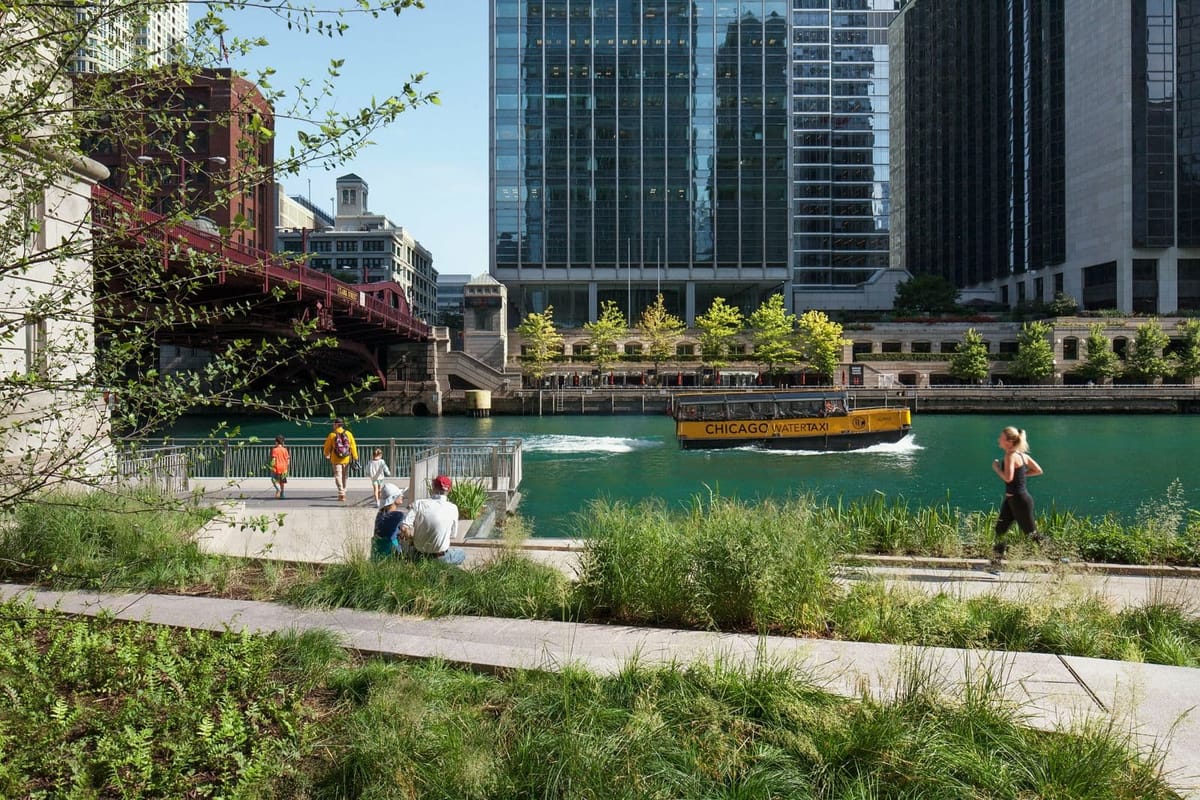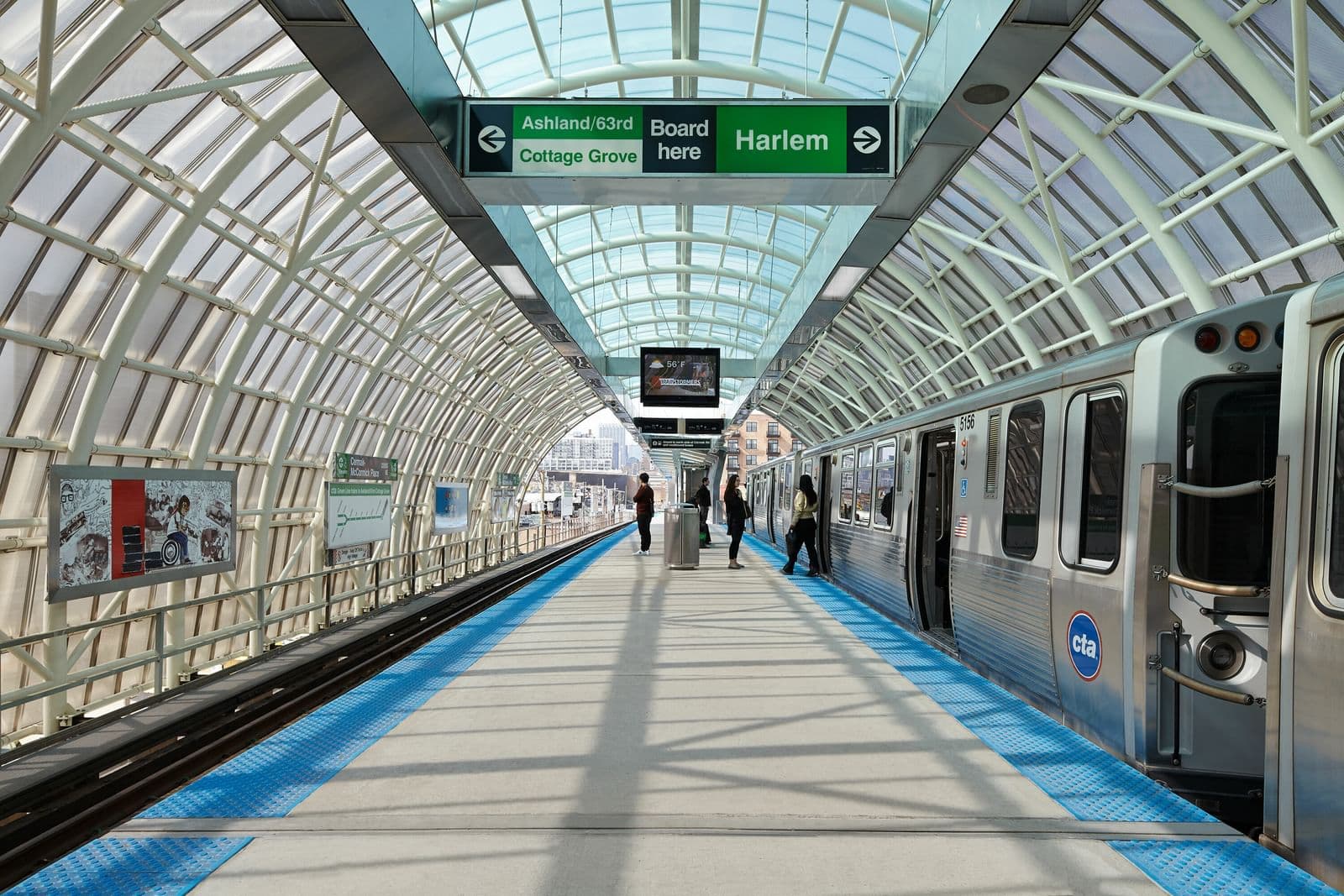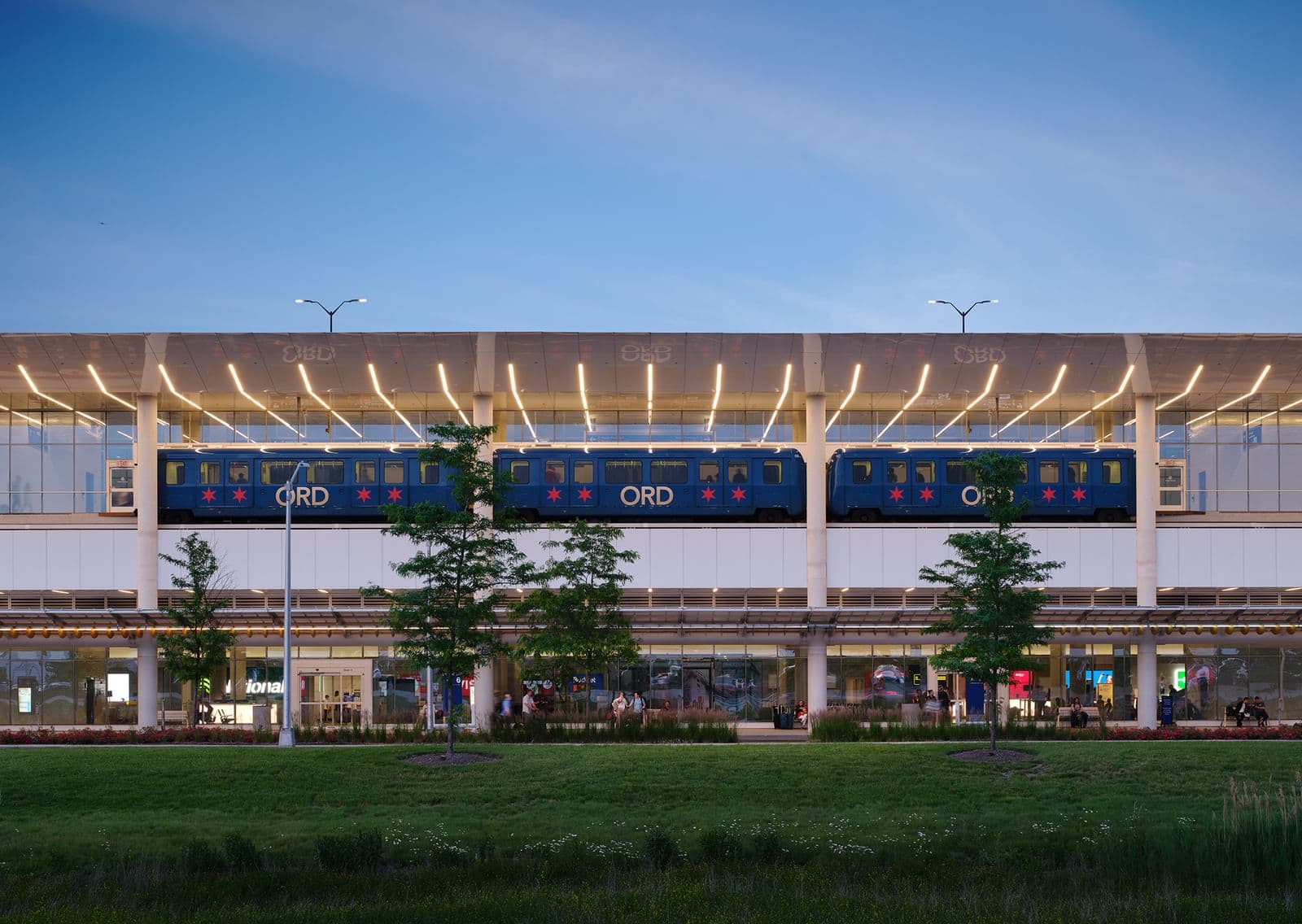Civics Lesson
Carol Ross Barney’s urban agenda is finally receiving its due

Hi everyone,
This week, a brief appreciation of Chicago architect Carol Ross Barney, occasioned by an award and a new book. I grew up in the city, though the majority of her impactful projects were completed after I left for university and my adult life. Nonetheless, my return visits have been shaped by her efforts, not least because she redesigned the El stop two blocks from my childhood home.
After reading the book, I couldn’t get a basketball metaphor out of my head. Superstars help teams reach the highest peaks; other players “lift the team’s floor,” guaranteeing a baseline of quality. They’re “glue guys” doing the little things to make sure everyone around them succeeds. Ross Barney is the latter type of architect, and has raised the bar for civic design in Chicago, which is an achievement worth celebrating. Which architects play similar roles in your town? Hit reply and let me know.
Safe and easy wandering, my friends,
Brian
🔗 Good links
- 👀🏢 Buildings that caught my eye: a futuristic coffee shop in Kyoto by Teki Design; a silo-like brick apartment building in Prague, by Christian Kerez; a Rhode Island house reimagined for coliving by Pršić and Pršić; a combined sports hall and academic facility in Munich, by Dietrich Untertrifaller
- 🏆🧑🏻💼 Canadian Architect has published a new Twenty + Change list of emerging architectural practices—a mix of familiar and unfamiliar names, all worth perusing
- 💡⌛ There are also twenty items in this list of “lessons that life, architecture, and design have taught” Indian journalist and curator Apurva Bose Dutta
- 🔊🌉 Bop Spotter listens for songs from a pole in SF’s Mission District. “It’s not about catching criminals. It’s about catching vibes.”
- 📚🎨 Oliver Wainwright on the newly reopened Warburg Institute in London; Matthew Bowman argues “it’s Aby Warburg’s world, we’re just living in it”
- 🔋♻️ Journalist Robinson Meyer, in his outlet Heatmap, on “how to decarbonize your life” (archive/gift link, if necessary)
Civics Lesson

I was born in Chicago at the moment Carol Ross Barney founded her studio. Her impact on my hometown exceeds that of just about any architect working during my lifetime, a point underscored last year when the American Institute of Architects awarded her its prestigious Gold Medal. But it took the award for me to bring her broad range of projects into focus, in part because they have not been the flashiest commissions. The city’s leading art museum has turned to European architects for expansions and master plans. This century, its skyline has been shaped by architects like Jeanne Gang and more corporate firms like SOM and Adrian Smith + Gordon Gill.
Nonetheless, Ross Barney’s projects serve millions of people every year. Her firm has helped the beleaguered Chicago Transit Authority modernize aging stations and complete infill projects that bring stops to underserved neighborhoods. At O’Hare Airport, rather than design a flashy new terminal, her firm did the hard work of unifying parking, car-rental agencies, commuter rail, and more into a multimodal complex that helps get people in and out.
Perhaps her most celebrated work is the Chicago Riverwalk, which fundamentally reoriented the city’s downtown by connecting it to the water it had long ignored and polluted. For a decade, Ross Barney and her colleagues negotiated with the Chicago Department of Transportation and countless partners to adapt existing but underutilized infrastructure into something people gravitate toward. The project required extreme dexterity: marshaling political will; working with narrow plots of land; staging its construction on floating barges; understanding and revivifying marsh and marine ecosystems; and planning for regular floods.
One of the best things to be said about this project is that it has become a part of the city’s fabric—something locals imagine was always there. One of the best things to be said about Ross Barney is that her firm is still at it, another decade later, developing proposals to extend Riverwalk southward and upgrade adjacent street-level public spaces.

Near the outset of her career, Ross Barney borrowed a term from her mentor John A Holabird, Jr.: she would seek, as he did, “noble clients”—the ones, as the Life Story at the back of the book notes, “with important cultural or social agendas but not necessarily the most money or high-profile projects.” The adjective noble is key, in its elevation—even implied veneration—of the clients and projects deemed pedestrian by others in the design industry. Ross Barney has a design agenda, a way with materials, that is legible even after projects inevitably get “value engineered.” What she also has, and what many of her peers lack, is a civic agenda. The pairing of these agendas is why she rightly received the AIA’s award.
In his introduction to The People’s Architect (buy in the US or Canada), a new Ross Barney monograph, Iker Gil summarizes her approach: “build with dignity regardless of how mundane a project might appear.” The book, seemingly occasioned by the prize, offers a sample of her projects that leans heavily on existing case-study descriptions, photography, and fragments of previously published critical writing. What’s missing from the book is the story of how Ross Barney preserves that dignity. The broader social and economic contexts, of Chicago especially but other places where she has worked, remain mostly untold.
To give one example, Richard M. Daley, Chicago’s mayor for two decades of her firm’s existence, goes unmentioned. Yet in a 2007 interview conducted for the Chicago Architects Oral History Project, Ross Barney is optimistic about the mayor’s evolving attitude toward design: “fifteen or twenty years ago, architects thought he was the worst thing that ever happened to the city. All he cared about were these curlicue fences and trees. How are you going to build great space [under those conditions]? As he’s grown older and matured—and part of it is the political and cultural climate—he’s become a patron, and that type of thing is changing how we work here today, what Chicago is like.” She’s too modest to highlight her role in that transformation. But I’m glad that in the decade and a half since that interview, her firm has benefited from his and his successors’ newfound open-mindedness—because that means so, too, have Chicagoans.





